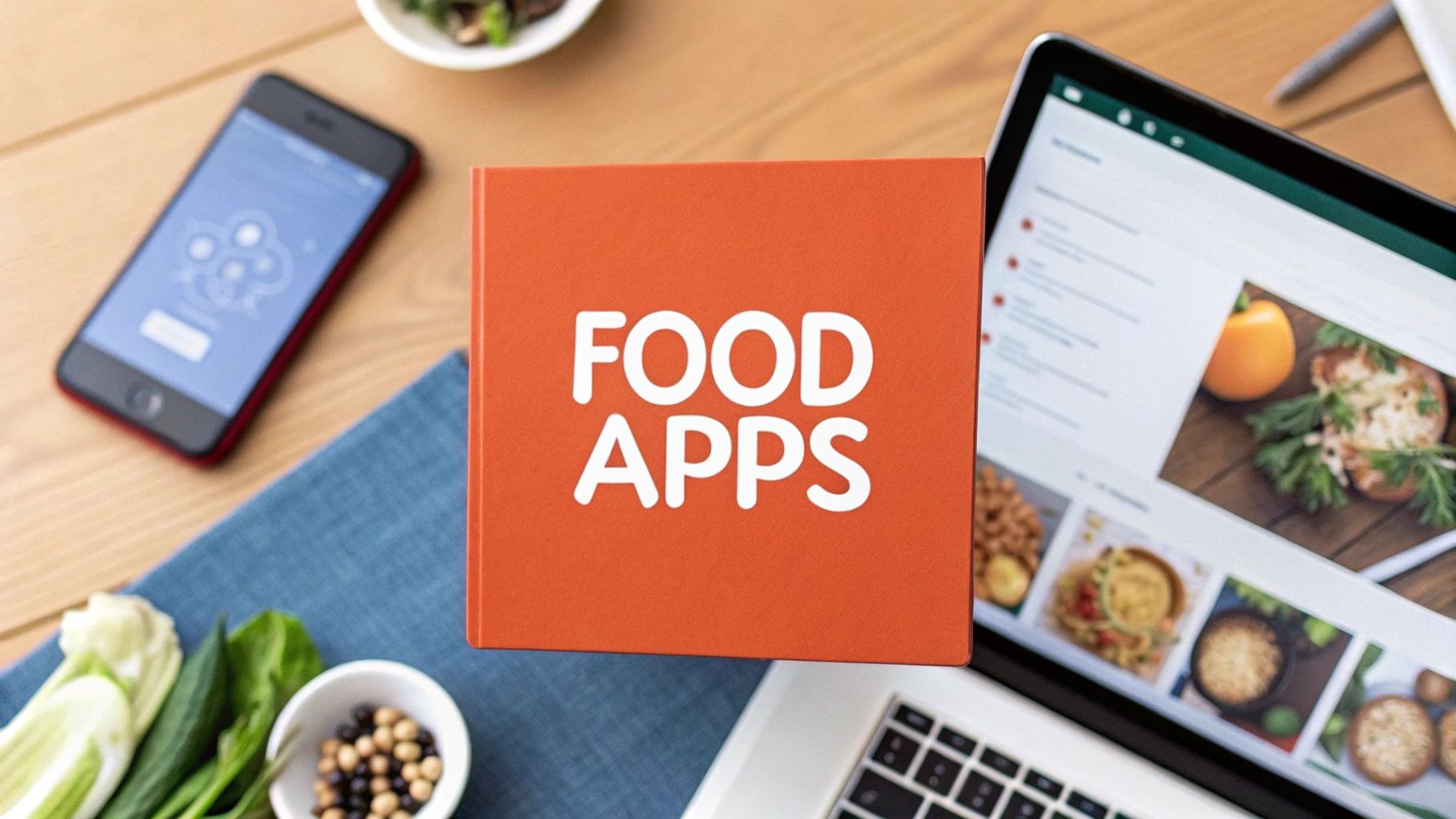Spice Up Your Food Blog With These Must-Have Apps
Running a successful food blog takes passion, creativity, and a dash of smart strategy. While the love of food is essential, the right technology can boost your blog's performance. Have you ever struggled to organize recipes? Or felt frustrated creating visuals for social media? Maybe scheduling posts consistently feels like a constant challenge. Choosing the right apps can solve these problems and unlock your blog's potential.
This curated list of the 10 best apps for food bloggers in 2025 tackles these challenges head-on. We'll explore tools to manage recipes, from inspiration to publication. We'll also look at visual storytelling with apps that help you capture stunning food photography and create engaging graphics. Plus, we'll discover the secrets to efficient social media scheduling and content planning.
Choosing the Right Apps
Key factors in choosing the right app include:
- Ease of use: How intuitive is the app's interface?
- Platform compatibility: Does it work on iOS, Android, and the web?
- Pricing: Is it free or a subscription service?
- Features: Does it offer specific tools for food bloggers?
An effective tool will simplify your workflow, enhance your content, and help you grow your audience. Whether you're a seasoned blogger or just starting out, this list will provide valuable insights and equip you with the tools you need to succeed. Let's get started!
1. Recify
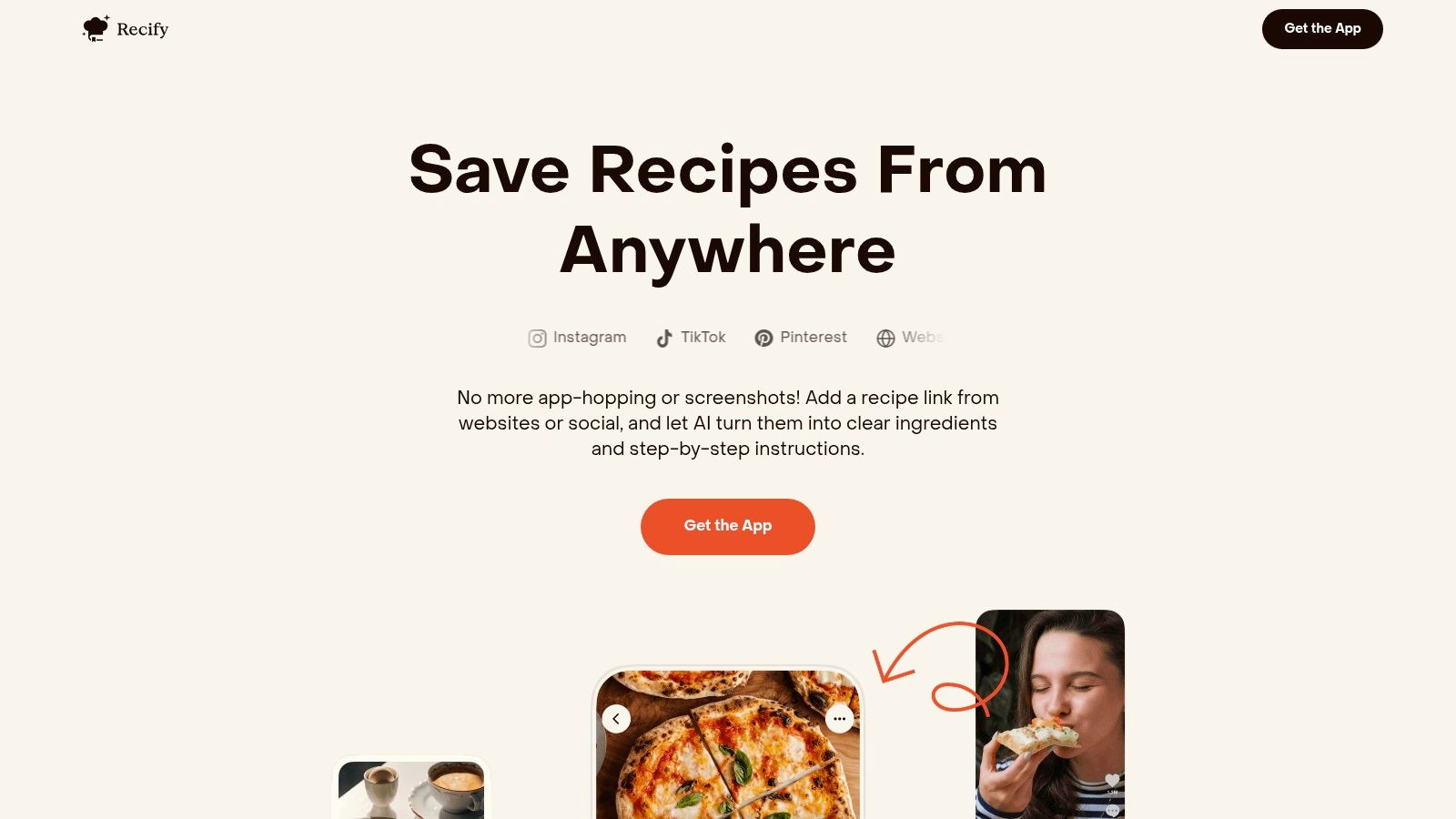
For food bloggers, staying organized can be a challenge. With so much recipe inspiration online, it's easy to get overwhelmed. Recify helps solve this problem by bringing all your recipes together in one place. Think about how many times you've lost a recipe screenshot or forgotten a bookmarked video tutorial. Recify helps you avoid this frustration.
Recify's main strength is its AI-powered recipe conversion. Just paste a recipe link from any website, YouTube video, Instagram post, TikTok, or Pinterest pin. Recify's AI will extract the ingredients and instructions, creating a neatly formatted recipe in your personal digital cookbook. This saves you from manual transcription and tedious video scrubbing.
Imagine planning a holiday baking series. You've found a cranberry sauce recipe on a blog, a gingerbread cookie tutorial on YouTube, and a cake decorating idea on Pinterest. Recify lets you import all these recipes, no matter the original format. The app creates easy-to-read versions, so you can focus on testing and adapting, not formatting.
Recify also offers excellent organizational features. You can create custom collections like "Weeknight Dinners," "Holiday Baking," or "Vegan Recipes." This makes it easy to find recipes when you need them. It's a valuable tool for food bloggers who need quick access to specific recipe categories.
Pros and Cons of Using Recify
Here’s a quick rundown of the advantages and disadvantages:
Pros:
- Streamlines recipe saving from various online sources
- Uses AI to convert videos and web pages into clear instructions
- Eliminates the need for multiple apps and screenshots
- Allows custom collections for different occasions
- User-friendly design for home cooks and bloggers
Cons:
- Requires internet access for recipe conversion
- May have limitations for recipes without a link
Website: https://www.recify.app
While pricing details aren't included here, Recify's ability to centralize and standardize recipes is a huge benefit. Whether you're a casual cook or a dedicated food blogger, Recify simplifies recipe management. This gives you more time to enjoy cooking and sharing your creations. It's particularly useful for those constantly using online recipe sources and wanting a more organized approach.
2. Adobe Lightroom
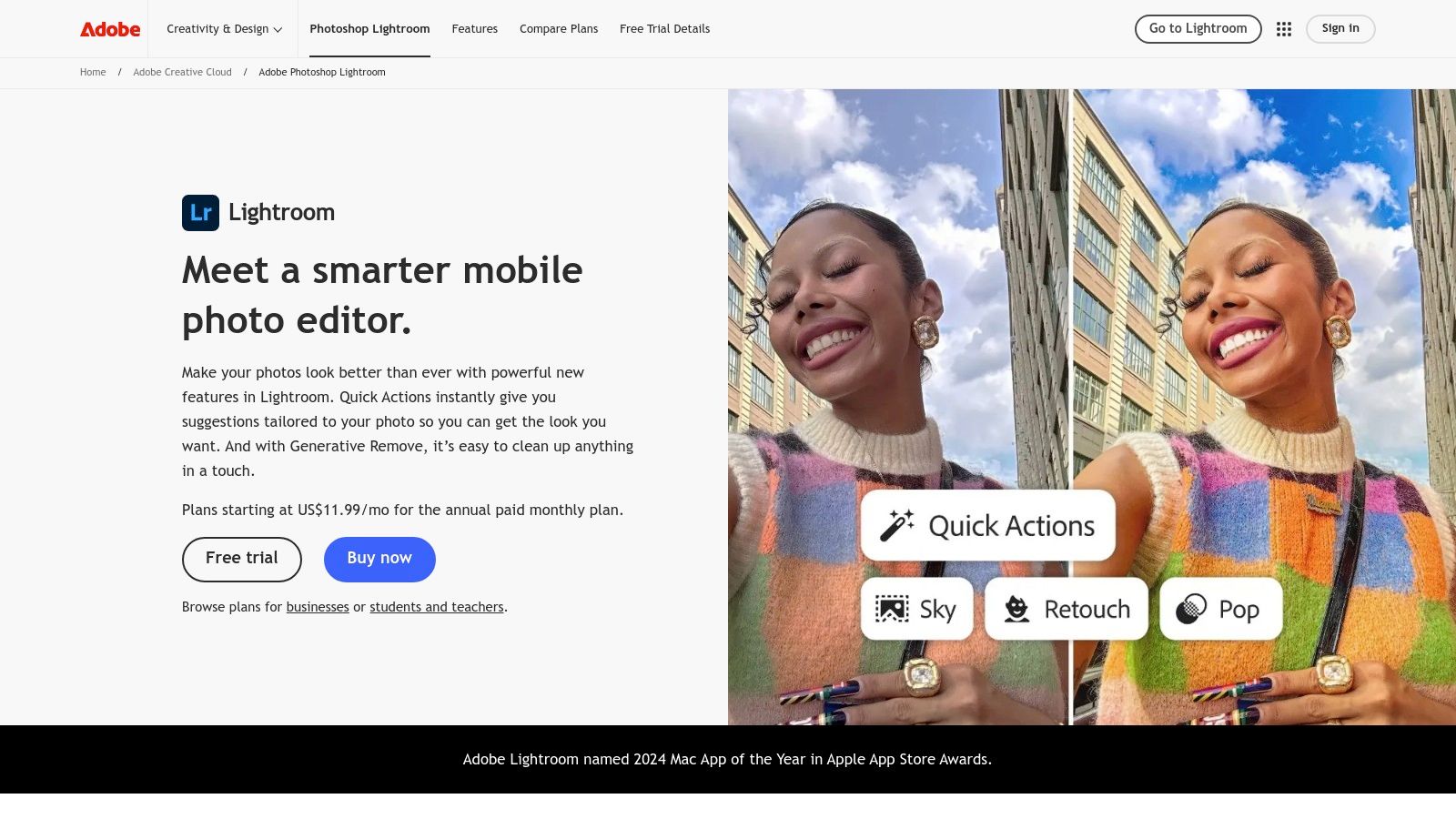
For food bloggers, high-quality photos are essential. Adobe Lightroom is a powerful photo editing app that can truly elevate your food photography. It’s a must-have tool for both new and experienced bloggers looking to showcase their culinary creations.
Lightroom offers much more than simple filters. You can fine-tune every detail, from brightness and contrast to color balance and sharpness. Selective adjustment tools also allow you to focus on specific areas, like brightening a shadowed ingredient or enhancing its color. This control helps ensure your photos accurately capture the vibrancy and texture of your dishes.
Food-Specific Presets
A key feature for food bloggers is Lightroom's food-specific presets. These presets offer pre-configured adjustments designed to instantly enhance food photos. With a single tap, you can achieve balanced lighting, enhanced colors, and that sought-after "food blogger" aesthetic. You can also customize these presets or create your own to develop your unique style.
Cloud Syncing and Storage
Lightroom’s cloud syncing is invaluable. Edit a photo on your phone and seamlessly continue working on your tablet or desktop. This flexibility is perfect for busy bloggers constantly on the move. Cloud storage also provides a secure backup of your photos.
Features and Benefits
- Advanced Photo Editing: Fine-tune every aspect of your images with professional-level tools.
- Cloud Syncing: Work seamlessly across your phone, tablet, and desktop.
- Food-Specific Presets: Instantly enhance your food photos with pre-configured adjustments.
- Selective Adjustment Tools: Target specific areas of your photos for precise edits.
- Adobe Creative Cloud Integration: Connects with other Adobe software for a streamlined workflow.
Pros and Cons
| Pros | Cons |
|---|---|
| Professional-quality editing tools | Subscription-based pricing model |
| Mobile and desktop versions available | Can have a steep learning curve |
| Regular updates with new features | Requires significant storage space |
| Strong community and tutorial support |
Implementation Tips
- Begin with the food-specific presets and adjust them to your style.
- Use the selective adjustment tools to highlight key ingredients and textures.
- Watch tutorial videos on YouTube to master advanced editing techniques.
- Organize your photos into collections for easy access.
Comparing Lightroom to Other Apps
While apps like Snapseed and VSCO offer user-friendly interfaces and basic editing, Lightroom provides more comprehensive professional-grade tools. This makes it a better long-term investment for serious food bloggers. The cloud syncing and Adobe Creative Cloud integration are also valuable advantages.
Website: https://www.adobe.com/products/photoshop-lightroom.html
Lightroom empowers food bloggers to create truly stunning visuals. While there's a learning curve and a subscription fee, the professional results and streamlined workflow make it a worthwhile investment.
3. Canva
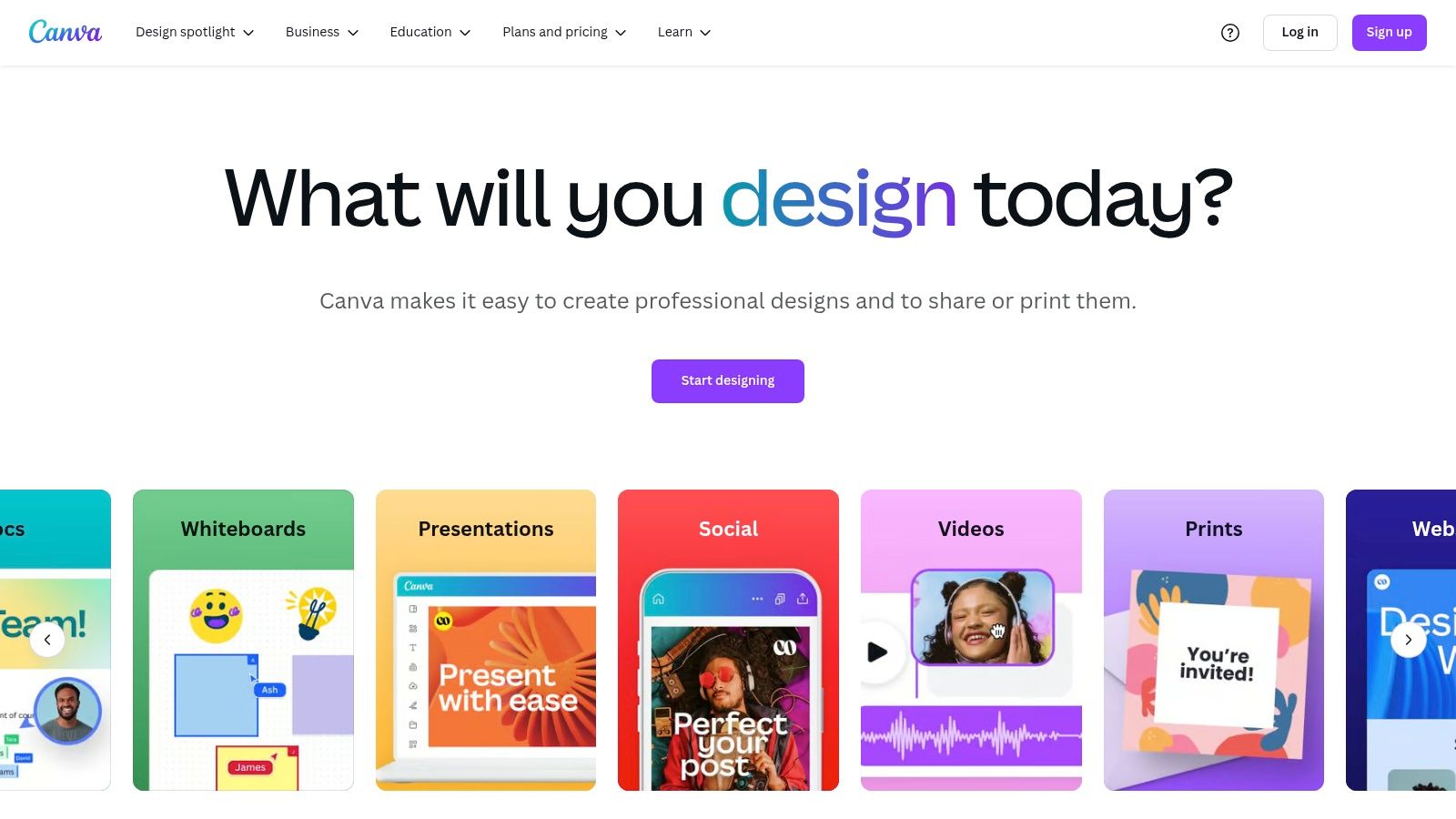
Canva is an all-in-one design platform that empowers food bloggers to create visually appealing content. This includes graphics, social media posts, blog headers, and even recipe cards. Its user-friendly drag-and-drop interface and thousands of food-related templates make it incredibly easy to maintain a consistent and professional visual identity. This is achievable across all platforms, even without advanced design skills.
Canva is an essential tool for any food blogger looking to elevate their online presence. Imagine effortlessly creating a stunning Instagram post showcasing your latest culinary creation. Think perfectly styled imagery and an enticing caption overlay. Or envision designing a professional-looking, easy-to-read recipe card for your blog. Canva makes all of this possible, and more.
Key Features for Food Bloggers
Here are some of the key features Canva offers food bloggers:
- Drag-and-drop editor: Intuitively create designs without any design experience.
- Thousands of food-related templates: Jumpstart your design process with pre-made templates for various social media platforms, blog posts, and more.
- Brand Kit: Maintain consistent branding by storing your logos, fonts, and color palettes.
- Photo editing capabilities: Enhance your food photos directly within Canva with basic editing tools.
- Content planner for social media: Schedule and publish your social media posts directly from the platform.
Pros and Cons of Using Canva
Like any tool, Canva has its advantages and disadvantages.
Pros:
- User-friendly interface: Easy to learn and use, even for beginners.
- Extensive free tier available: Access a wide range of templates and features at no cost.
- Collaboration with team members: Work together seamlessly on design projects.
- Mobile app for on-the-go design: Create and edit designs from your phone or tablet.
Cons:
- Some premium templates and elements require a paid subscription: Accessing all features requires a subscription.
- Limited advanced design features compared to professional software: Canva is not a replacement for professional design software like Adobe Photoshop.
- Can be slow with large projects: Working with complex designs or large files can sometimes impact performance.
Canva offers both free and paid plans. The free plan provides access to a substantial library of templates and design elements. Paid subscriptions unlock additional features, premium templates, and increased storage. For monetization tips, check out this guide on How to Monetize a Food Blog. This will help you make the most of your Canva creations.
Implementation Tip
Start by exploring Canva's vast library of food-related templates. Customize them with your own photos and branding elements to create unique visuals. This helps represent your individual style. Use the Brand Kit feature to ensure consistency across all your platforms.
Canva democratizes design. It allows food bloggers of all skill levels to create high-quality visuals. This enhances their content and attracts a wider audience. Its accessibility, combined with its powerful features, makes it a must-have tool. Visit the Canva website to start creating today.
4. VSCO
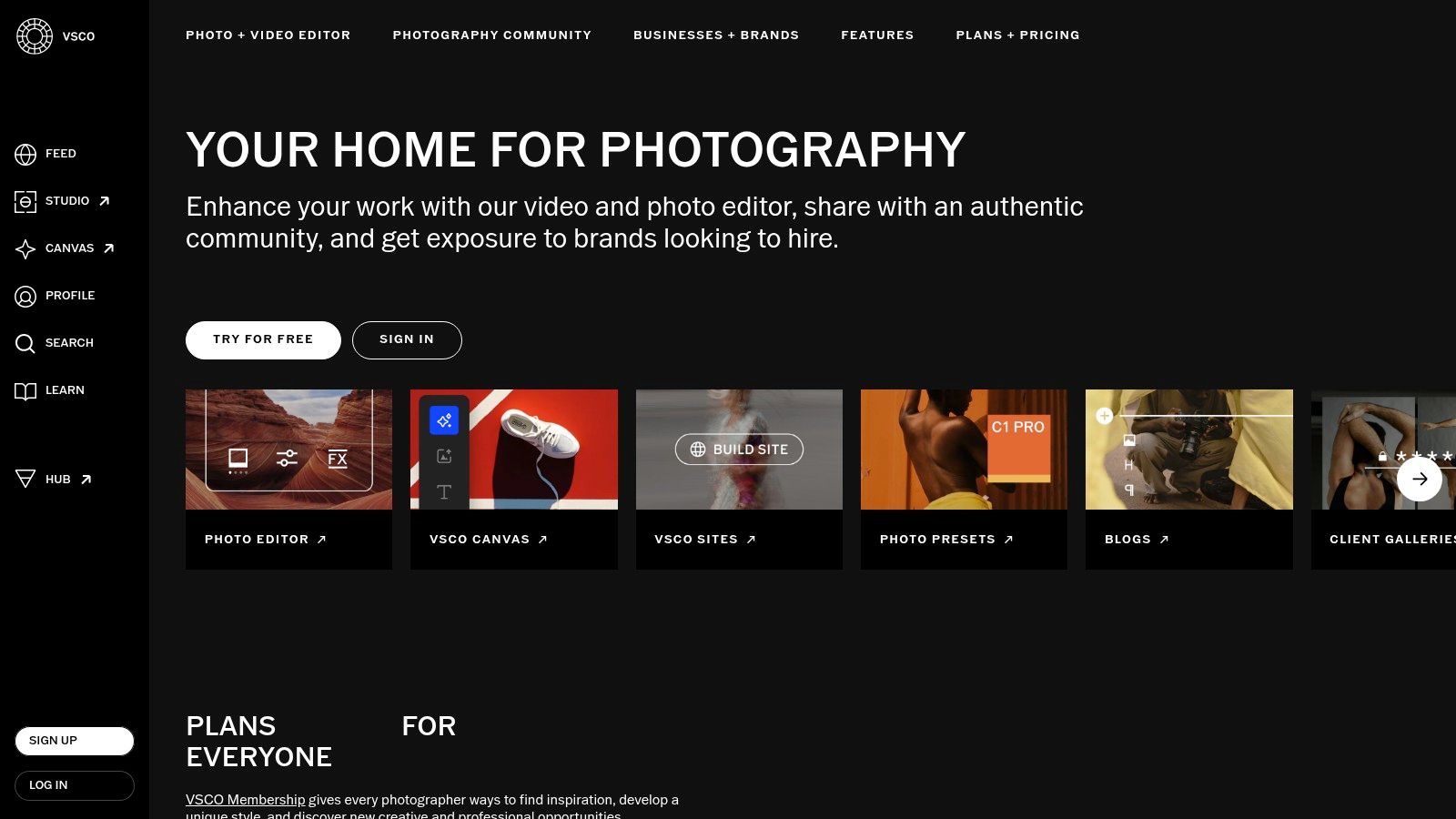
VSCO is a must-have app for visually appealing and consistent food photography, especially for Instagram. While known for its editing prowess, VSCO also hosts a creative community, connecting you with fellow food lovers.
VSCO's strength for food bloggers lies in its film-inspired presets. These filters offer a sophisticated alternative to basic Instagram filters, helping you create a cohesive look for your photos. Imagine a signature style instantly recognizable as yours – VSCO helps you achieve that.
Beyond filters, VSCO provides advanced editing tools to fine-tune brightness, contrast, and saturation. You can even create montages and short recipe videos within the app, adding another dimension to your content.
Think of VSCO as your tool for elevating simple phone snapshots to professional-looking photos. Whether it's a vibrant pasta dish or a rustic loaf of bread, VSCO helps you capture the perfect mood and highlight the delicious details. The intuitive interface makes editing easy, even on the go.
VSCO Membership and Availability
VSCO offers a free version with basic tools and a limited filter selection. To unlock the full potential, consider a VSCO Membership. This subscription unlocks the complete preset library, including film emulation presets that mimic classic film stocks, plus advanced features like HSL and video editing tools. Membership costs vary depending on the plan. VSCO is available for both iOS and Android.
Features, Pros, and Cons of VSCO
Here's a quick breakdown of what VSCO offers:
-
Features:
- High-quality photo filters (including film emulation presets)
- Advanced editing tools (brightness, contrast, saturation, HSL, etc.)
- Recipe and montage creation
- Community sharing
- Simple, intuitive interface
-
Pros:
- Creates a consistent aesthetic
- Great for Instagram-focused food bloggers
- Vibrant creative community
- Easy-to-use interface
-
Cons:
- Many advanced features require a VSCO Membership subscription
- Limited text and layout options
- No direct social media scheduling
VSCO Compared to Other Apps
Compared to apps like Snapseed or Lightroom Mobile, VSCO emphasizes aesthetic consistency and community engagement. While Lightroom offers more robust tools, VSCO's curated presets and simplified workflow make it perfect for bloggers looking for quick and effective photo enhancements.
Implementation Tip
Experiment with different presets to find a few that best suit your style. Once you have your favorites, stick with them for a consistent aesthetic across your feed. Explore the VSCO community for inspiration and connect with other food creators!
Visit VSCO
5. Later
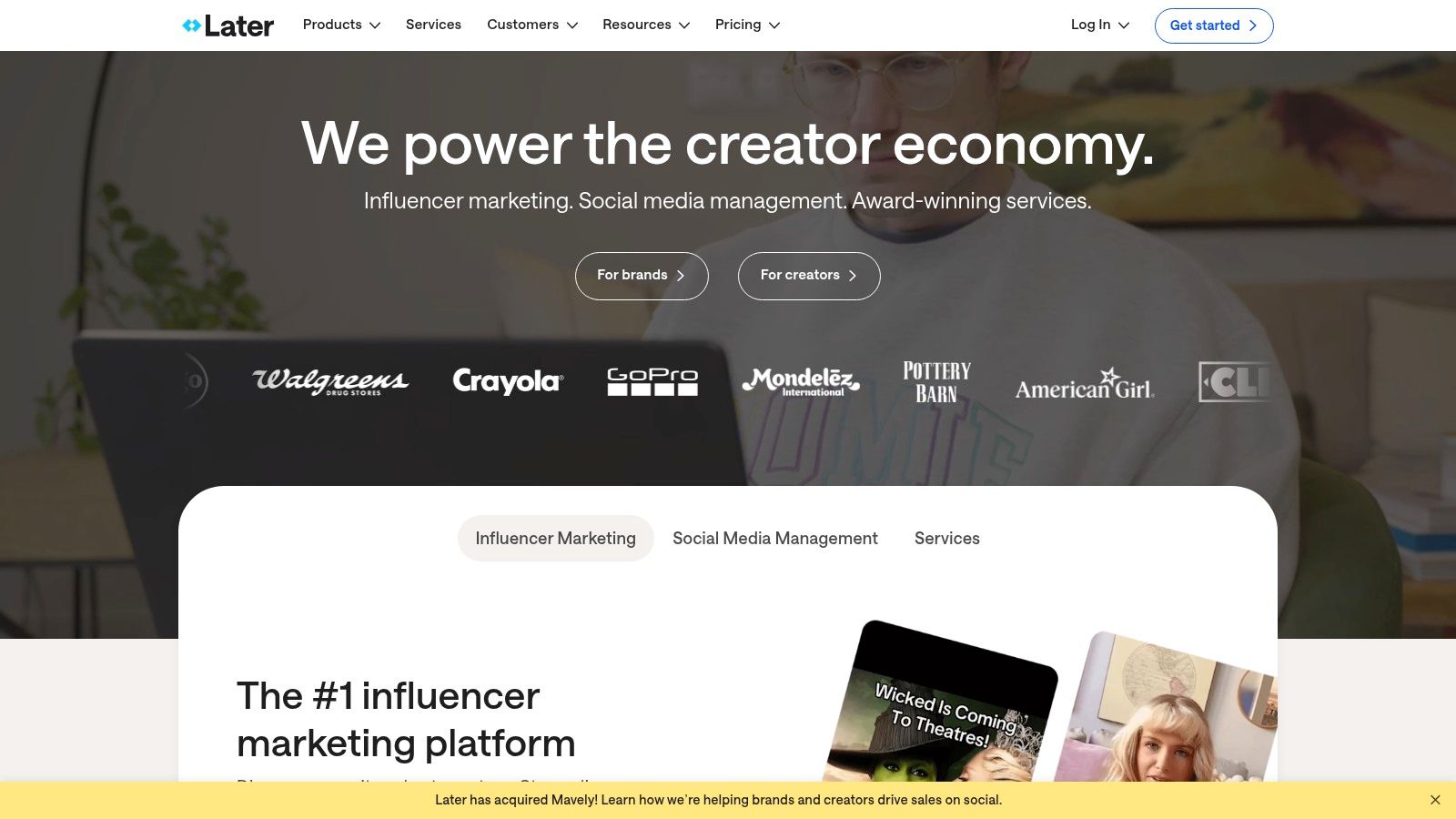
Later is a powerful social media scheduling tool designed for visual platforms. This makes it an ideal choice for food bloggers. Imagine planning a week's worth of content for Instagram, Pinterest, TikTok, and Twitter, all in one convenient location. That's the power of Later.
It allows you to visually plan and schedule appealing food photos and engaging recipe videos. This ensures consistent content delivery and maximizes your audience reach.
For food bloggers, visual storytelling is essential. Later's drag-and-drop visual content calendar lets you preview how your feed will look before posting. This helps maintain a cohesive and attractive aesthetic. No more last-minute scrambles for content! Schedule Instagram Stories, posts, and even Reels in advance.
Later also helps optimize your posting schedule. It suggests the best times to post based on your audience's engagement patterns. This data-driven approach can significantly improve your visibility.
Later also provides valuable hashtag suggestions and analytics. You can track post performance and gain insights into what resonates with your followers. This allows you to refine your content strategy and grow your audience.
The "Linkin.bio" feature for Instagram is especially helpful. It lets you direct traffic from your Instagram posts to specific recipes or blog posts, overcoming Instagram's single link limitation. This is a game-changer for driving traffic to your website.
Features
- Visual content calendar
- Multi-platform scheduling (Instagram, Pinterest, TikTok, Twitter, Facebook)
- Instagram Stories scheduling
- Best time to post recommendations
- Hashtag suggestions and analytics
- Linkin.bio for Instagram
Pros
- User-friendly visual planner simplifies scheduling.
- Link in bio tool for Instagram increases traffic to your blog.
- Detailed analytics offer valuable insights into post performance.
- Supports multiple social platforms, simplifying your social media management.
Cons
- The free plan has limited features and post scheduling.
- Some advanced features, like auto-publishing and in-depth analytics, require a paid subscription.
- Limited image and video editing capabilities within the app. You'll likely need to edit your content beforehand.
Website: Later
Implementation Tips
- Start with the free plan to explore the platform.
- Connect all your social media accounts for streamlined scheduling.
- Use the visual calendar to plan content visually and ensure a consistent aesthetic.
- Leverage the best time to post suggestions to maximize reach.
- Analyze post performance regularly to refine your content strategy.
Later shares some features with other social media management tools like Buffer and Hootsuite. However, its focus on visual planning and Instagram features makes it particularly suitable for food bloggers. Its intuitive interface and powerful scheduling capabilities let you spend less time managing social media and more time creating compelling content. If you're looking to enhance your food blog's social media presence, Later is worth exploring.
6. Recipe Keeper
Recipe Keeper is a powerful app designed for organizing, storing, and sharing your recipes. For food bloggers, this means a simpler workflow for recipe development, testing, and documentation. Instead of searching through notebooks or bookmark folders, Recipe Keeper provides one central hub for all your recipe needs.
You can import recipes from websites, add your own with photos, adjust ingredient amounts for different servings, and even create meal plans. This lets you focus on the creative side of food blogging instead of administrative tasks. For bloggers who are always experimenting and refining recipes, Recipe Keeper's structured format helps track every change.
Recipe Keeper’s robust import feature, pulling recipes from various online sources, is especially useful for bloggers inspired by different websites. Custom recipe creation, ingredient scaling, and meal planning are also important for developing unique content. Cross-platform syncing ensures you can access your recipes whether you're in the kitchen with your tablet or writing a blog post on your laptop.
Features
- Recipe import from websites
- Custom recipe creation
- Meal planning
- Shopping list generation
- Cross-platform synchronization
Pros and Cons
Here's a quick overview of the advantages and disadvantages:
| Pros | Cons |
|---|---|
| Clean, organized recipe storage | Pro version needed for full functionality (pricing varies) |
| Ability to categorize and tag recipes | Limited styling options for recipe presentation |
| Works offline | Syncing can occasionally be slow |
| Import recipes from various sources |
Learn more about organizing recipes online.
The free version offers basic functionality, but the Pro version unlocks key features like cloud sync and unlimited recipe storage. This is a worthwhile investment for serious food bloggers needing reliable access to their growing recipe collection. While the in-app recipe presentation is functional, it lacks advanced styling options. Occasionally, syncing can be slow, which is a minor inconvenience. Despite these drawbacks, Recipe Keeper offers a practical solution for managing any food blog's core component: the recipes.
Recipe Keeper Website
7. Foodie
Foodie is like your personal food stylist, ready to transform everyday meals into Instagram-worthy photos. This free camera app, developed by the creators of Line Camera, is designed specifically to make your food photography stand out. Whether you’re a seasoned food blogger or just a home cook who enjoys sharing your creations, Foodie can help you capture that perfect shot.
Forget those generic camera filters. Foodie offers a curated collection of filters optimized for different types of food and dining settings. From "Sweet" for desserts to "Romantic" for dimly lit restaurants, you'll find the perfect filter to enhance your food's visual appeal. But Foodie’s smart features go beyond just filters.
The app helps adjust brightness for the best results in various lighting conditions, which is especially useful in those tricky indoor restaurant settings. It even includes a handy guide for taking those popular top-down, flat lay shots that are so common in food blogging. Imagine effortlessly centering your plate and getting that perfect bird’s-eye view. Foodie makes it simple.
Streamlining Content Creation
For bloggers, Foodie can streamline the content creation process. Imagine quickly taking a vibrant photo of your latest recipe, already optimized for social media, right within the app. While Foodie doesn't offer editing tools after you take the photo or direct posting features, its real-time filters and guides help you get closer to a share-worthy image straight from your camera.
Features:
- Food-specific camera filters (e.g., Sweet, BBQ, Romantic)
- Auto-blurring for background bokeh
- Plate-centering guides
- Optimal brightness adjustment for food
- Top-down angle guide for flat lays
Pros:
- Designed for food photography
- Real-time filters
- Free to use
- User-friendly interface
Cons:
- Limited editing capabilities
- No posting or scheduling features
- Performance may vary on older smartphones
Why Foodie Deserves a Spot on This List: Foodie provides a simple, easy way to improve your food photos. While it may not replace professional editing software for serious bloggers, its ease of use and specialized features make it a handy tool for anyone who wants to showcase their culinary creations. It's an ideal starting point for beginners and a convenient tool for quick, beautiful food photos on the go.
Implementation Tip: Play around with the different filters to find your favorites. The "Yum" filter is a versatile option, while others work best with specific dishes. Don't be afraid to use the top-down guide even for non-food flat lays; it’s surprisingly useful for arranging items symmetrically!
Foodie Website
8. Evernote
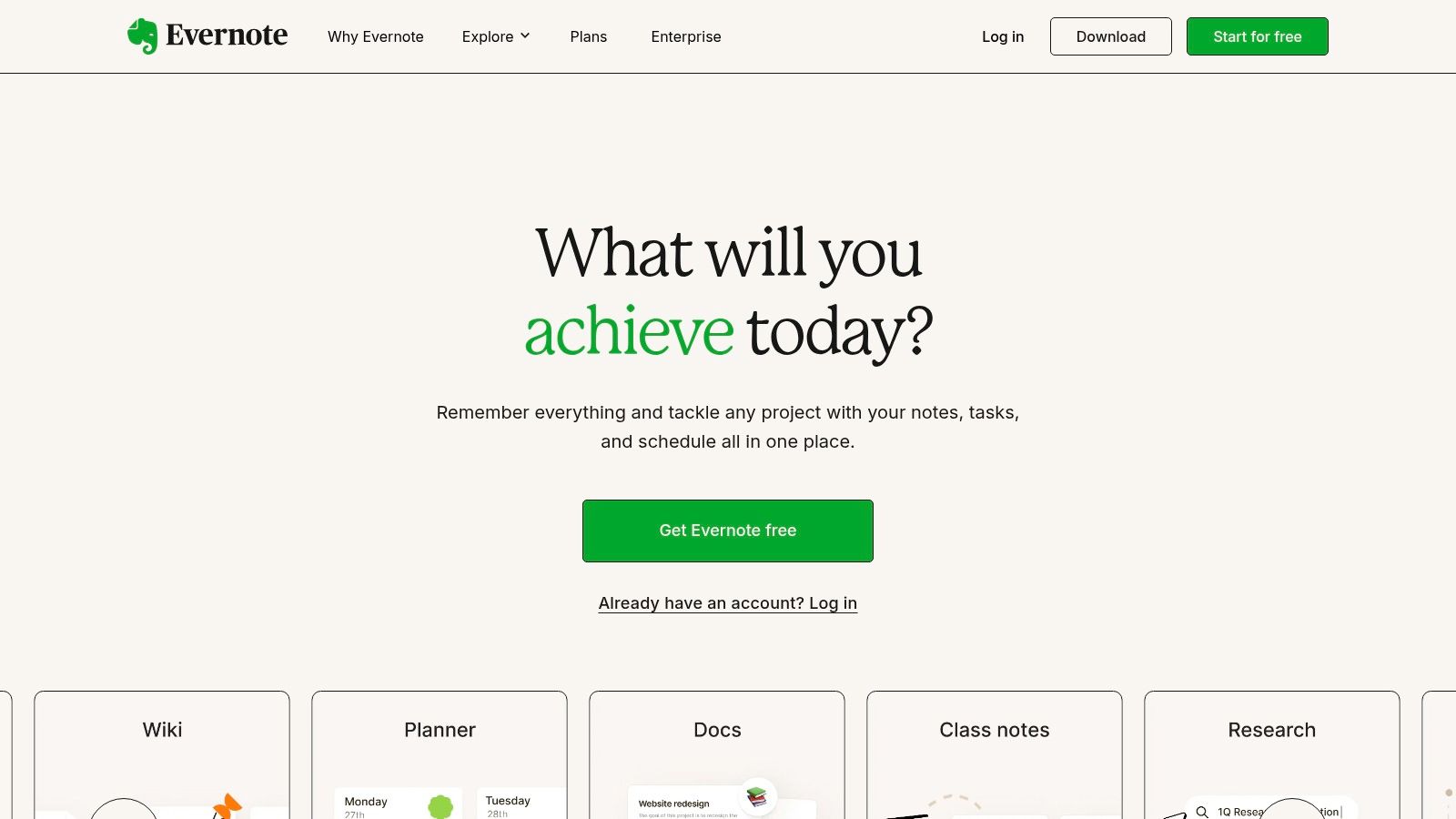
Evernote is more than just a note-taking app. It's a powerful organizational tool, a true best friend for food bloggers. From brainstorming recipe ideas to managing a full editorial calendar, Evernote provides a central hub for all your culinary content. Think of it as a digital scrapbook. You can instantly save recipes, jot down cooking techniques, plan blog posts, and even track sponsored post details. This versatility makes it a must-have for food bloggers.
A key feature for food bloggers is Evernote's web clipper. Find an interesting recipe or food article online? Clip it directly into Evernote. No more lost links or messy bookmarks! Organize these clippings into notebooks, like "Recipe Ideas," "Restaurant Reviews," or "Food Photography Inspiration." Use tags like "#vegetarian," "#baking," or "#comfortfood" within notebooks for easy searching.
Beyond clipping, Evernote excels at managing the details of food blogging. Draft blog post outlines, track ingredient lists for shopping trips, and store contracts and communications related to sponsored content. Evernote handles various media types. Embed images of finished dishes directly into recipe notes, or record audio notes of cooking techniques as you experiment in the kitchen. Cross-platform synchronization lets you access everything on your phone, tablet, or computer, anytime, anywhere. Even handwritten notes and scanned documents are searchable, so you can always find that napkin sketch of a brilliant cake decoration.
Features
- Web clipper for saving online content
- Note organization with notebooks and tags
- Cross-platform synchronization
- Document scanning
- Searchable handwritten notes and images
Pros
- Powerful organization system
- Excellent search capabilities
- Works across all devices
- Handles multiple media types (text, images, audio)
Cons
- The free version has a limited monthly upload capacity. While enough for casual use, avid bloggers might hit this limit.
- Can become complex with heavy use. The many features, while powerful, can feel overwhelming for new users.
- Premium features require a subscription. This includes offline access, increased upload limits, and collaboration tools.
Similar Tools
Implementation/Setup Tips
- Create a dedicated "Food Blog" notebook and set up a clear tagging system from the beginning to avoid organizational headaches later.
- Use the web clipper regularly. Clip recipes and articles as soon as you find them to avoid the frustration of trying to relocate them later.
- Explore the different note formats. Use checklists for grocery lists, audio notes for quick thoughts, and scanned documents for preserving handwritten recipes.
Evernote provides a robust and versatile solution for food bloggers. It helps organize growing collections of culinary inspiration and manage the complexities of content creation. While the free version has limitations, the premium subscription can be worthwhile for serious food bloggers.
9. Tasty
Tasty, the BuzzFeed-owned recipe app, isn't specifically designed for food bloggers. However, it offers a wealth of resources for staying on top of food trends and video presentation styles. While home cooks use it for finding dinner inspiration, food bloggers can use Tasty as a powerful research tool. Think of it as a window into what's capturing the attention of millions of food enthusiasts.
Tasty's strength lies in its vast library of short, visually engaging recipe videos. These videos, known for their top-down perspective and dynamic editing, have become the industry standard for online recipe content. By studying these videos, bloggers can glean insights into successful presentation techniques, popular ingredient combinations, and emerging food trends. You can observe how Tasty simplifies complex recipes for a broader audience, a valuable skill for any food blogger aiming for wider appeal.
Features
-
Trending Recipe Discovery: Easily find out what's currently popular in the food world.
-
Step-by-Step Video Instructions: Clear and concise video tutorials make recipes easy to follow.
-
Ingredient Scaling: Adjust recipe quantities based on the desired serving size.
-
Shopping List Creation: Generate shopping lists directly from the recipes.
-
Meal Planning Assistance: Helps users plan meals based on dietary preferences and available ingredients.
Pros
-
Great for Trend Research and Inspiration: Stay ahead of the curve by observing trending recipes and video styles.
-
Clear, Visually Appealing Recipe Format: The easily digestible video format simplifies understanding recipes.
-
Ability to Save Favorite Recipes: Build a personal collection of recipes for future reference.
-
Regular Updates with New Content: Ensures a constant stream of fresh ideas.
Cons
-
Limited Customization Options: You can't annotate or modify recipes within the app.
-
No Content Creation Tools: Tasty is primarily for consumption, not creation.
-
Not Specifically Designed for Bloggers: Lacks features like direct sharing to social media platforms or blog integration.
Implementation/Setup Tips
Download the Tasty app from the app store (iOS and Android). Browsing through the trending section and saving recipes related to your niche is an excellent starting point. Consider how Tasty's video style and ingredient combinations can inspire your own content.
Comparison
While apps like Paprika and Plan to Eat focus on recipe organization and meal planning, Tasty offers a unique advantage in terms of trend analysis and video inspiration. It’s less of a management tool and more of a creative resource.
Pricing: Free
Website
Tasty deserves a spot on this list because it bridges the gap between casual cooking and content creation. While not a blogger-specific tool, its value as a source of inspiration and insight into current food trends is undeniable. By observing what works on Tasty, food bloggers can refine their own content strategies and connect with a larger audience.
10. Yummly
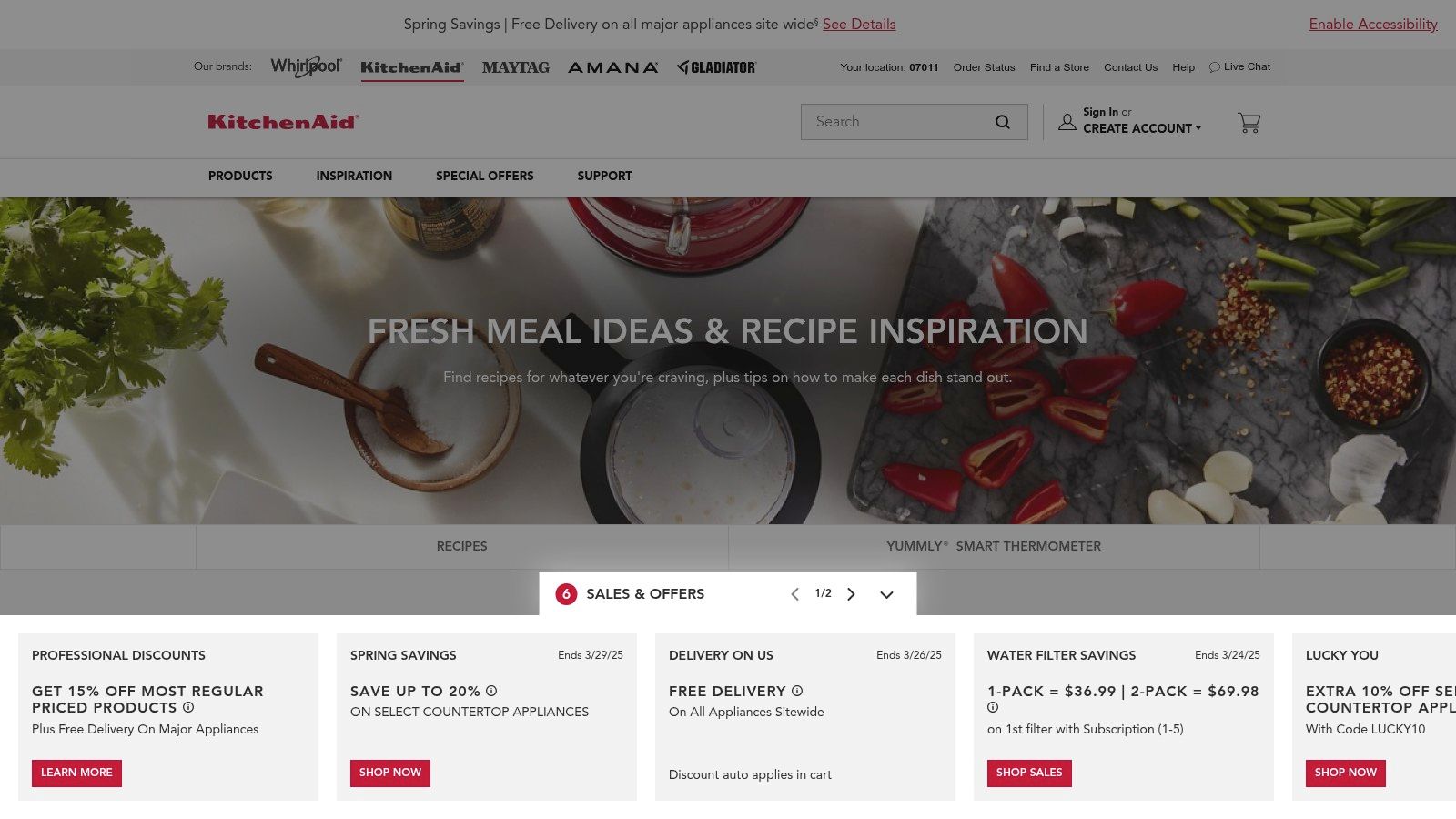
Yummly isn't your typical content creation tool. Think of it more as a powerful resource for recipe discovery, organization, and understanding what your audience wants. While not specifically for blogging, its features offer valuable insights for food bloggers. It’s a market research tool and inspiration hub all in one.
Imagine you focus on gluten-free recipes. Yummly lets you easily filter for gluten-free dishes and see what other creators are doing. How are they structuring their recipes, categorizing ingredients, and showing nutritional information? This can help you refine your own approach and connect with your target audience. The personalized recommendations also provide a peek into how algorithms handle dietary restrictions. This offers a glimpse into how your audience might find your recipes online.
Yummly has a huge and diverse recipe database, offering endless inspiration. Its ingredient recognition technology can even suggest recipes based on what’s in your pantry. This sparks creativity and reduces food waste. Features like detailed nutritional data, recipe scheduling, and meal planning further improve the user experience, especially for home cooks and those with specific diets. You might also like our guide on Recipe Apps by Ingredient.
Key Features and Benefits
Here's a quick overview of what Yummly offers:
- Personalized recipe recommendations: Discover new dishes tailored to your tastes.
- Detailed nutritional information: Perfect for health-conscious cooks and specific diets.
- Ingredient recognition technology: Use what you have on hand and minimize waste.
- Recipe scheduling and meal planning: Organize your cooking and simplify your week.
- Integration with grocery delivery services: Streamline your shopping process.
Pros and Cons
Like any tool, Yummly has its strengths and weaknesses:
Pros:
- Comprehensive dietary filters: Easily find recipes for any dietary need.
- Intelligent learning of taste preferences: The more you use it, the better it gets.
- Includes cooking tutorials: Learn new techniques and improve your skills.
- Large, diverse recipe database: Never run out of culinary inspiration.
Cons:
- Pro version required for advanced features: Pricing isn't publicly available.
- Limited recipe editing capabilities: You can’t fully customize existing recipes.
- Not primarily designed for content creation: It’s a discovery tool, not a blogging platform.
Yummly's ability to uncover trending recipes, highlight dietary preferences, and offer insights into recipe categorization makes it invaluable for food bloggers. By understanding how users interact with recipes on Yummly, you can improve your content and create recipes that are both delicious and easy to find. Visit the Yummly website to explore its features and enhance your food blogging journey.
Top 10 Food Blogger Apps: Essential Feature Comparison
| App | Unique Features ✨ | Experience ★ | Value 💰 | Audience 👥 |
|---|---|---|---|---|
| 🏆 Recify | AI converts messy recipe links into clear steps; centralized cookbook | Intuitive & streamlined | Eliminates app-hopping & screenshot clutter | Home cooks, bloggers, social media fans |
| Adobe Lightroom | Professional-grade editing; cloud sync; food presets | High-quality, precise tools | Subscription-based | Food bloggers, professional photographers |
| Canva | Drag-and-drop design; food-themed templates; brand kit | Easy & collaborative | Extensive free tier with premium upgrades | Content creators, food bloggers |
| VSCO | Film-inspired filters; consistent aesthetic | Simple, creative interface | Some features via subscription | Instagram creatives, food enthusiasts |
| Later | Visual content calendar; multi-platform scheduling | User-friendly planning | Free plan available; advanced options paid | Social media planners, food bloggers |
| Recipe Keeper | Recipe import; meal planning; offline access | Clean, organized layout | Pro version unlocks full functionality | Home cooks, recipe organizers |
| Foodie | Food-specific camera filters; real-time editing guides | Quick & intuitive capture | Free to use | Food photographers, culinary bloggers |
| Evernote | Versatile note-taking; web clipper; organized tagging | Robust organization & search | Free with premium features | Bloggers, organizers, multitaskers |
| Tasty | Step-by-step video recipes; trending food ideas | Visually engaging, easy to follow | Free with limited customization | Cooking enthusiasts, inspiration seekers |
| Yummly | Personalized recommendations; ingredient recognition | Intelligent, adaptive interface | Pro features available for a fee | Diet-conscious cooks, recipe seekers |
Ready to Transform Your Food Blog?
With these top 10 apps, you have everything you need to elevate your food blog. From creating stunning visuals with Lightroom, Canva, VSCO, and Foodie to scheduling content with Later, and finding inspiration with Tasty and Yummly, these tools offer a comprehensive blogging toolkit. Evernote provides versatile note-taking, while Recipe Keeper offers dedicated recipe management. But how do you choose the right combination?
Think about your priorities. Are you focused on creating visually appealing content? If so, prioritize photography and design apps. Is organization key? Then recipe management and note-taking tools are essential. Starting small and experimenting with a few apps at a time can help you find the perfect workflow.
Budget is also an important factor. Many apps offer free versions with limited features, while others require subscriptions. Consider your needs and resources before committing to paid versions. Also, check if the apps you choose integrate well together. Seamless sharing between apps can significantly streamline your workflow.
Key Takeaways
-
Visuals Matter: Invest time in creating high-quality photos and graphics.
-
Organization Is Key: Keep your recipes and ideas organized.
-
Consistency Is Crucial: Regularly create and share engaging content.
-
Engagement Is Essential: Interact with your audience and build a community.
-
Experiment and Adapt: Find the tools and workflow that best suit your individual needs.
Ready to take control of your recipe chaos and transform your food blog into a well-organized, inspiring hub? Recify makes it easy to save and organize all your favorite recipes from across the web, from YouTube and Instagram to TikTok and Pinterest. Stop juggling screenshots and scattered links.
With Recify's AI-powered magic, you can instantly convert any recipe link into a clear, easy-to-follow format, all within a single, personalized digital cookbook. Start your free trial today and experience the future of recipe management! Get started with Recify!
